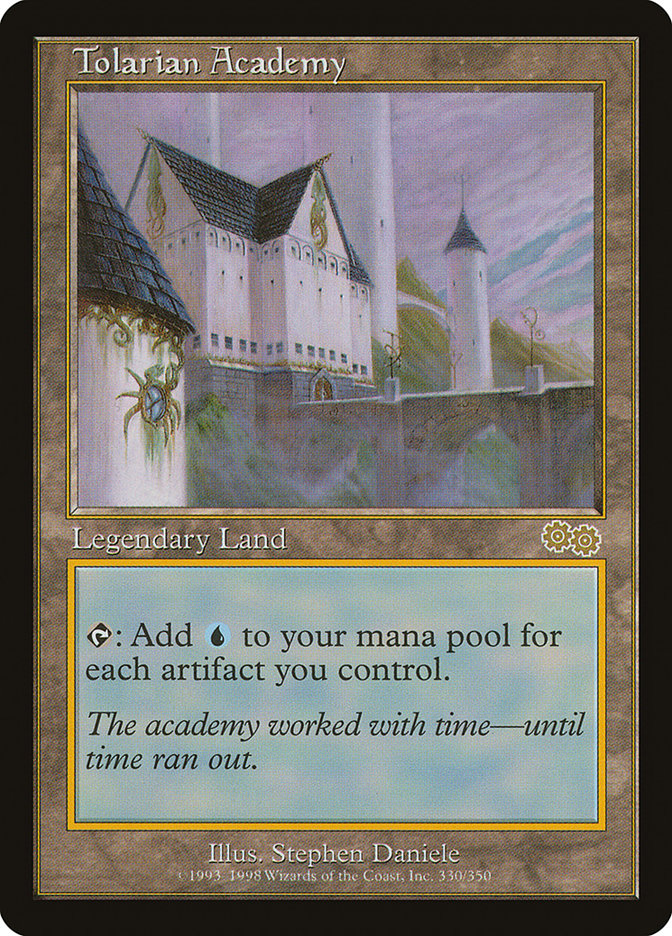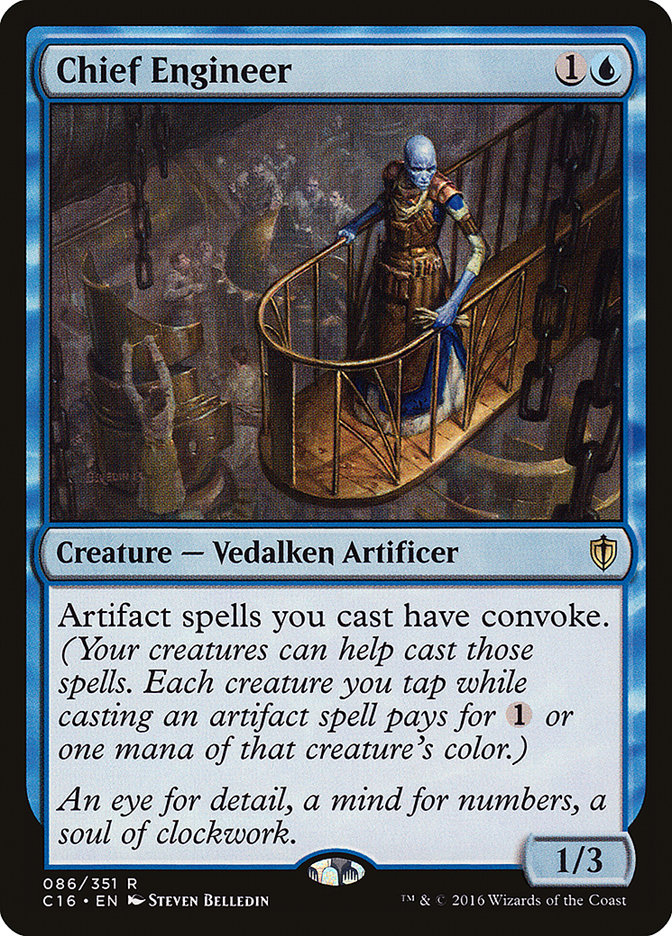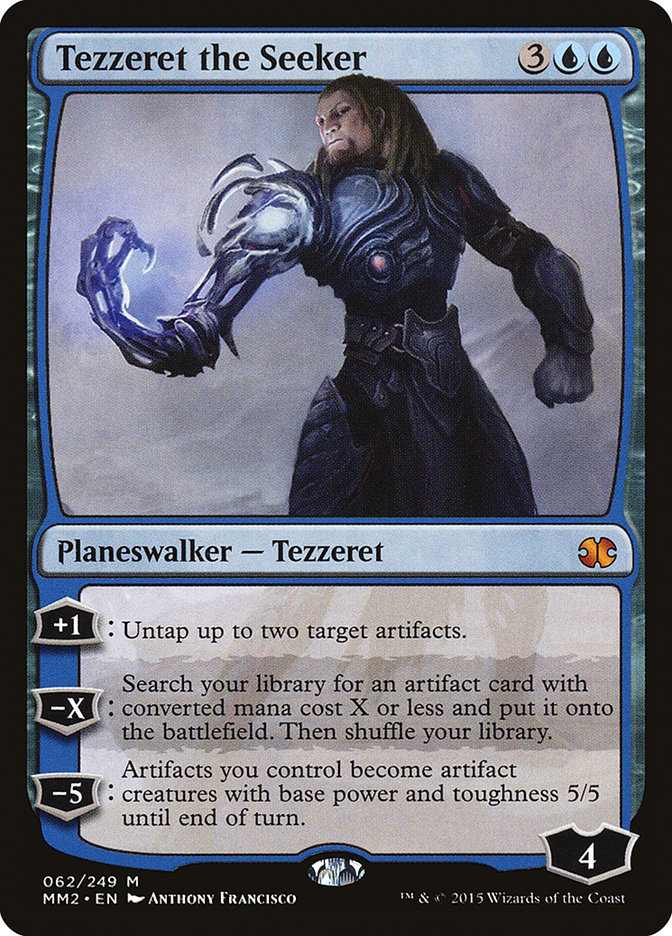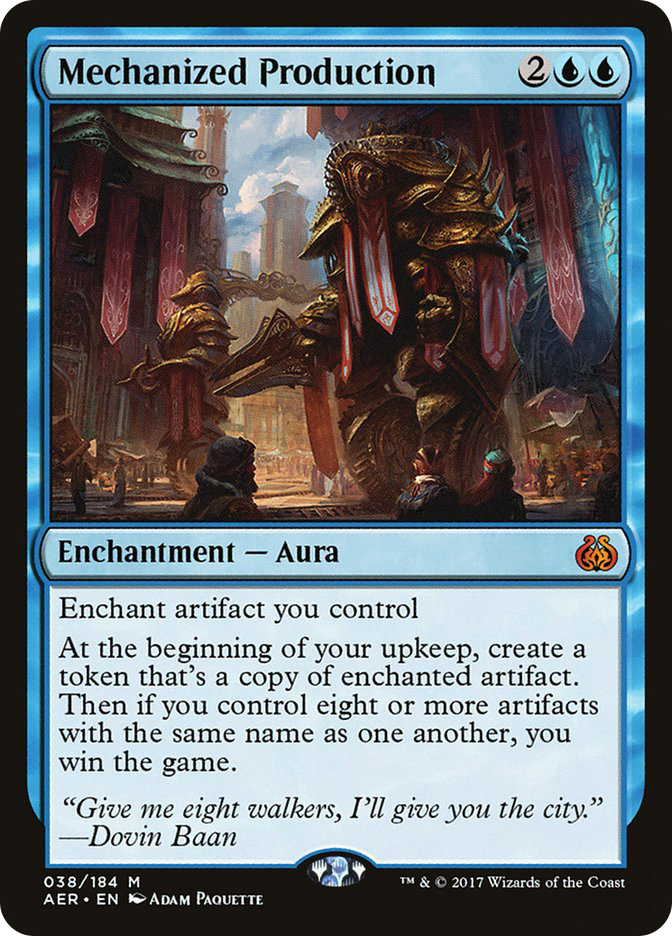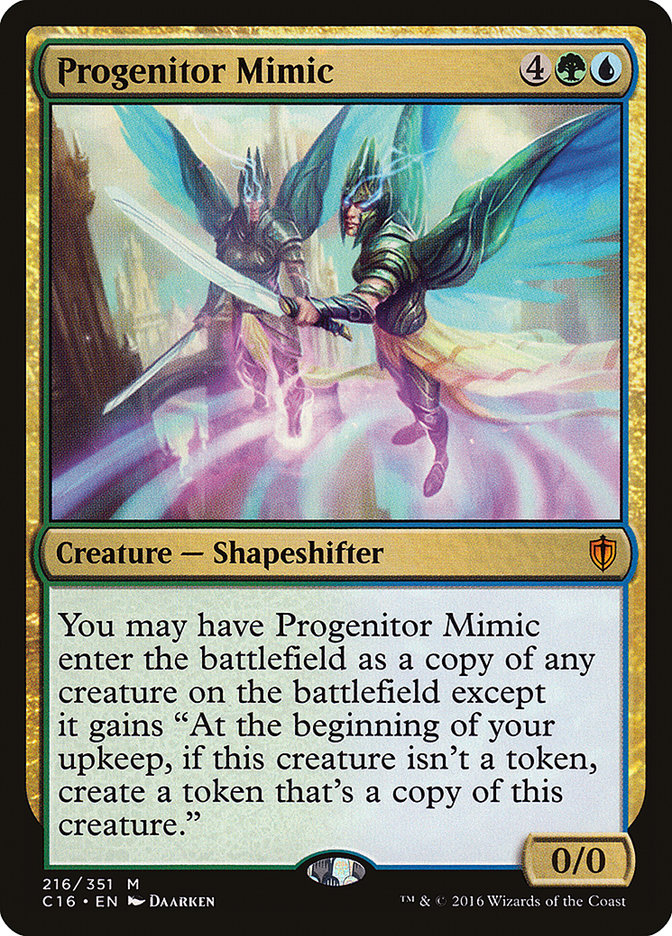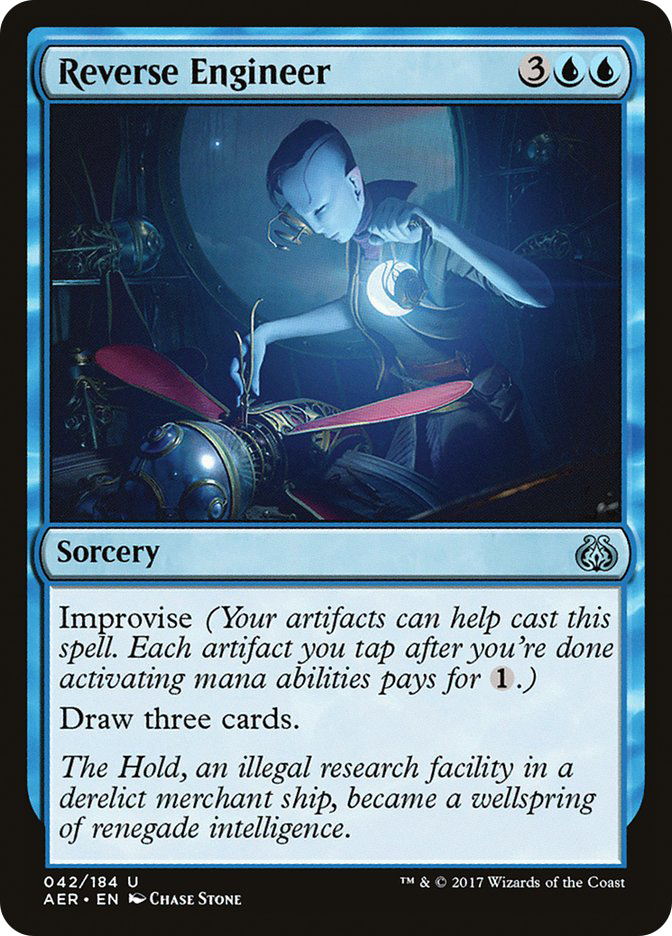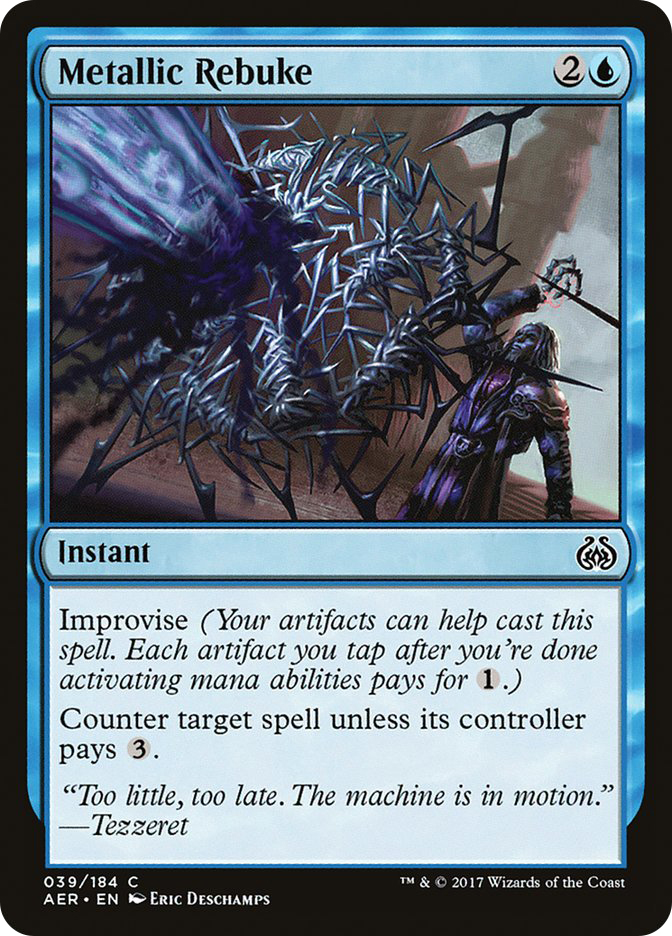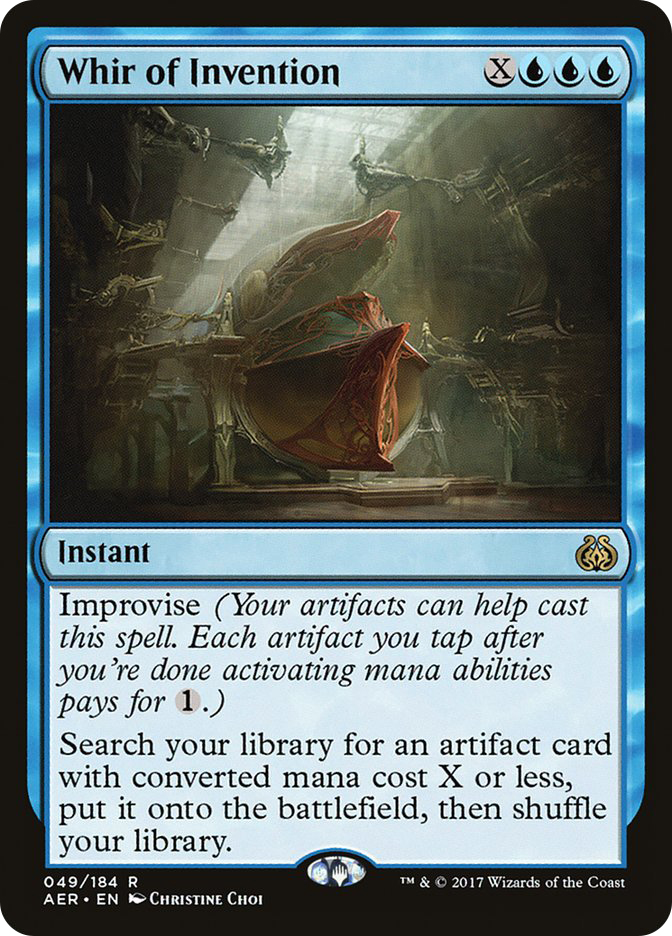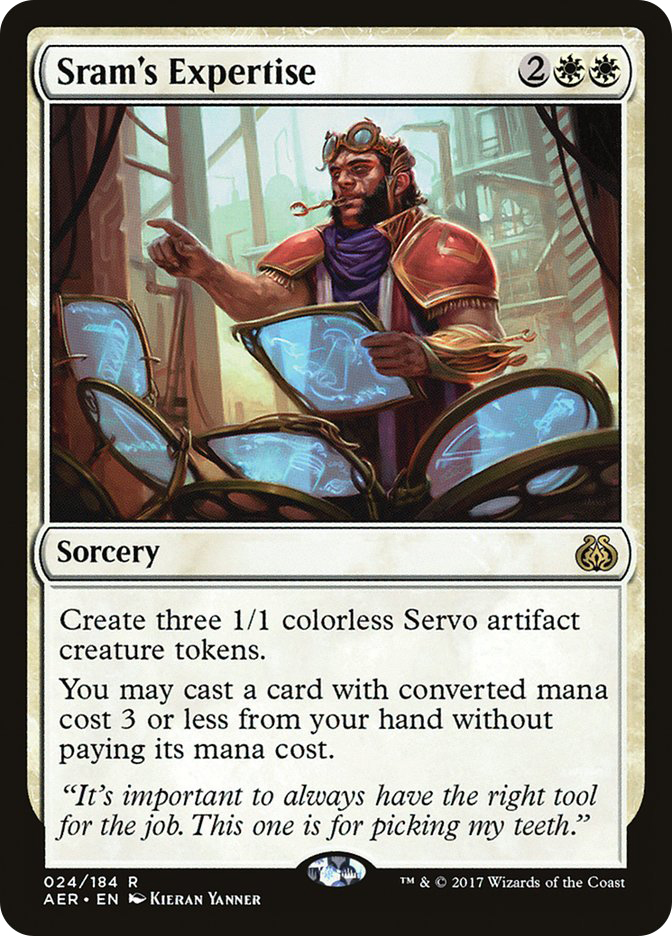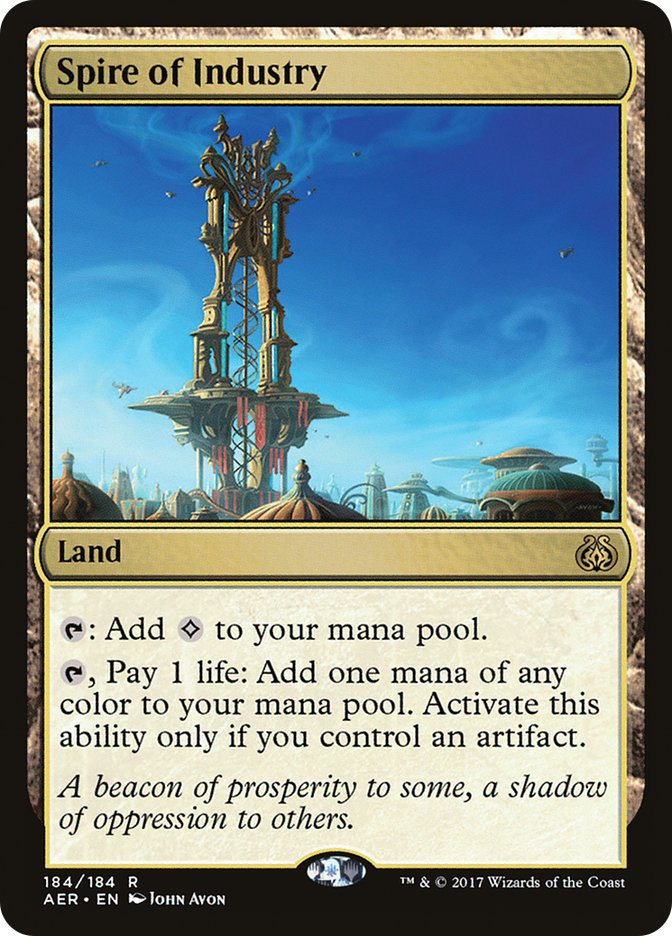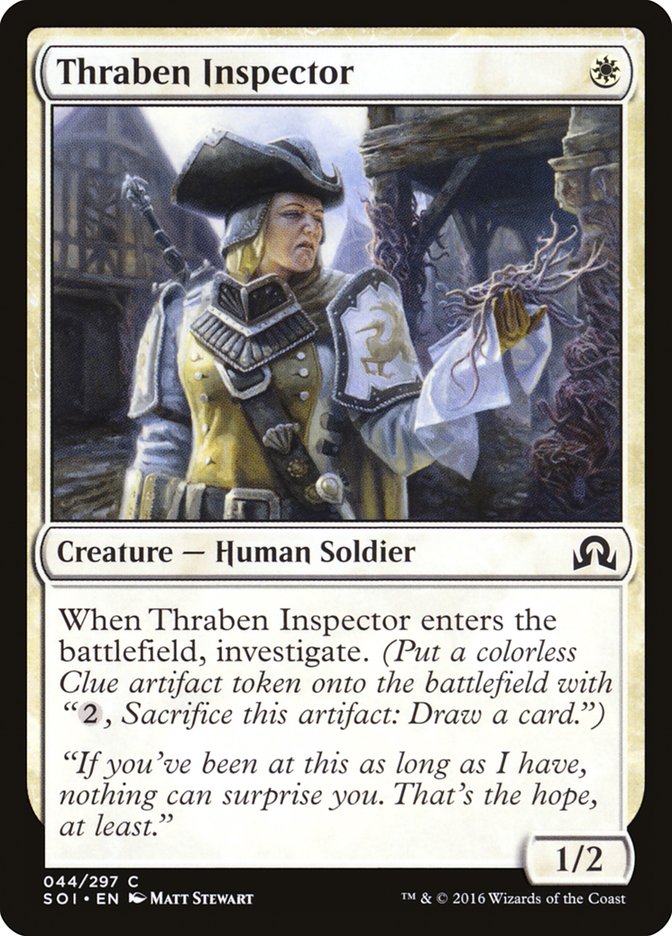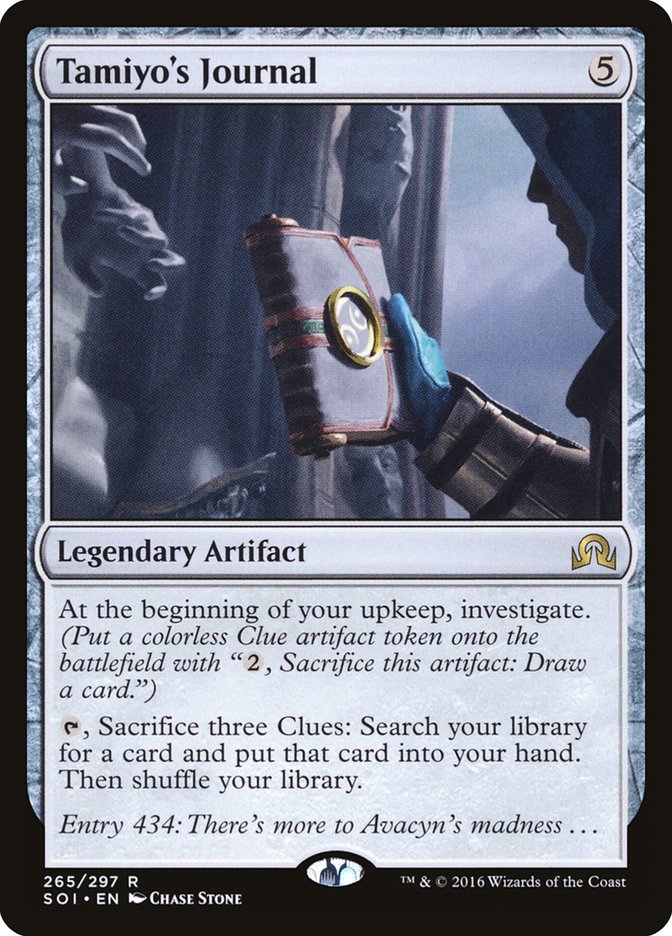Out of the five colors of magic, blue has always been the fondest of artifacts.
This paradigm has been in place for decades now, and it only seems appropriate that blue stay close to its colorless buddy in an artifact-themed block. While every color in Kaladesh and Aether Revolt works with artifacts in some way, Islands seem to be the most appropriate.
Earlier this week, I shared my first Improvise deck, bringing lots of beats on the cheap. Continued testing has proven this deck’s flexibility and resiliency, and I’m still really enjoying playing it and showing it off, win or lose. However, there are more blue cards in this set that deal with artifacts that demand attention on their own.
First of all, let’s be clear: I know what a long shot this card is. “You win the game” are four words that appear on a great many cards that appear with a splash in a new set and then disappear after a couple of weeks. We’ve seen it before, even in recent sets, with cards like Hedron Alignment and the reprinted Felidar Sovereign. The conditions are usually arbitrary, requiring considerable deckbuilding resources to achieve, and you’re expect to do this all under the hail of fire your opponent is raining down on you. Any more, “you win the game” cards come with very large asks, but Mechanized Production does at least provide you a benefit in the meantime, and the cost is easy enough to manage that it can end up in a proactive game plan.
Progenitor Mimic had a similar effect; every turn, you’d get a copy of the best creature you controlled, complete with its combat ability and battlefield-entering triggers. Mechanized Production can do that, too, and there are some attractive artifacts it can copy, even if you never reach eight copies of them.
I’m basically seeing two ways to build a Mechanized Production deck. First, you can churn through your deck as quickly as possible, getting your natural four copies of the target artifact onto the battlefield and then sticking Mechanized Production on them to win as quickly as possible. Second, you can go a token route; Servos and Thopters are easily produced by a variety of Standard-legal cards, and tokens have the same name as each other, meaning you can produce multiple copies of the target artifact off one card.
When we’re looking at the first option, Improvise seems like a good place to start, thanks to several cards featured in Monday’s deck as well as a new trick.
In fact, we can use a large amount of the base of Monday’s deck to get started and see where it goes from there.
Spells (36)

This deck has a singular focus but a particular purpose. Using cards I already had for the most part, I wanted to construct a deck that tested the raw potential of Mechanized Production. To do this, my linear deck would need to play artifacts, survive onslaught, and last long enough to see eight copies of any one artifact. The deck is a blunt instrument, to be sure, but it should provide enough proving to see what a more final deck would need.
A deck like this would likely focus on a fairly innocuous artifact as its target for Mechanized Production such as Prophetic Prism, which would let you draw an extra card each turn, or Pacification Array, which would let you tap down one more creature each turn. Engulf the Shore, relegated to the sideboard normally, is the deck’s only means of sweeping away a creature army, and bouncing the Ornithopters in my deck is harmless.
This deck goldfished very well, but the Mechanized Production win was painfully slow. The tools were present in this deck, but not with any type of velocity to be terribly impactful. The low level of interaction also makes it difficult to disrupt the opponent, especially if they’re employing shenanigans like Saheeli Rai.
To speed things up, I think the token route might be the best logical step.
Remember Spectral Procession and how much of a beating that card was, especially when complemented with the turn 4 Ajani Goldmane? To me, this card feels similar; not as good, but similar.
Sram’s Expertise offers a great first step to creating armies of Servos that serve two functions: they can battle, and they can add up for the Mechanized Production kill once you’re ready.
With the prevalence of artifacts, we’re able to branch out our colors considerably with one of Aether Revolt’s sleeper hits: Spire of Industry.
Servos and the other artifacts assigned to support them can help branch us out in color, giving us a much broader attack plan. If we push the Servo plan, we can get aggressive if the matchup calls for it, and if the game stalls, we’ve got Mechanized Production as a solid inevitability.
Planeswalkers (4)
Lands (25)
Spells (31)

This deck is a bit more complex and attacks from a variety of angles, yet is still relatively consistent with early pressure. Cards like Hidden Stockpile keep the Servos, and the right cards, coming. The removal is straightforward and potentially backbreaking: Battle at the Bridge isn’t a garden-variety removal spell, and it’ll either help stabilize you or push you way ahead. 1/1s aren’t much by themselves, and Revolt-on-demand makes Fatal Push live for most engagements. The draw engine leaves a lot to be desired, but we’re not as reliant on it thanks to a stronger core.
Admittedly, creatures, especially tokens, are a risky proposition. They can be swept away, bounced, killed in combat, or even stolen. Creatures do much of the grunt work in Magic these days, but the first deck had the benefit of targeting noncreature artifacts, providing innate protection from the most common removal spells. The first deck was less interactive and more combo-dependent, but it was also better-insulated. The Esper deck is meatier and more flexible, but its main artifact target is subject to almost any removal, making Mechanized Production a last resort in a stalled game.
Wait a second: we have Clues!
Clues, like creature tokens, share the same name for any card or ability that “asks” it. Clues are born useful, cycling themselves if their artifact or token-ness is not currently relevant. Servos are fragile and easily destroyed, but Clues are nearly impossible to target successfully. Worst comes to worst, you can crack a Clue for a card, leaving your opponent high and dry with whatever corner removal spell they pointed at it.
Clues continue to impact Standard today, and with some integration from Kaladesh, Aether Revolt, and Shadows over Innistrad, we could come up with a vichyssoise of fun.
Creatures (14)
Lands (21)
Spells (24)

This deck plays very strangely in practice and is actually considerably more complex than either earlier version. Thraben Inspector continues to be the bee’s knees, blocking and cantripping like a pro. Erdwal Illuminator, probably the surest sign of a dedicated Clue deck in Standard, doesn’t die to Shock and provides excellent value both in terms of Clue production and card production. Baral, Chief of Compliance seems a bit out of place, but with so many instants and plenty to do with our mana, the reduction matters considerably. Seven maindeck counterspells also provide seven opportunities to loot away worthless Clue cracks. Tireless Tracker is likely the best Clue producer in Standard, and the incremental advantage it gives you is well-documented in the format. Here, we’re really after the Clues, not the cards. Worst comes to worst, Tireless Tracker is a huge blocker or beater.
It may seem that I like Renegade Map too much, but I encourage you to play with it. Having the right color land in hand at any point in the game, with the exception of the turn you play it, is a small price to pay, especially in a deck where land matters. It also makes your two-color lands like Fortified Village and Prairie Stream much more reliable. It’s true that it plays best in Improvise decks, but I think it’s an underplayed little land. There are plenty of Clue producers, with the ringer being Confirm Suspicions. With Baral, Chief of Compliance, this hard counter is easier to cast and provides incredible card selection. The velocity and value that Baral provides is unheard of, honestly. Tamiyo’s Journal, besides idly producing Clues itself, lets you find Mechanized Production when you’re ready to go.
The deck is challenging to play, and the lines of play are not always obvious. Thinking several turns ahead is very important with this version, and I found I frequently misplayed; I should have cracked Clues earlier and more often to stay one step ahead of the opponent. Regardless, this list, as with the other two, are fun ways to use Mechanized Production. While the Mechanized Production aspect was not as fun, getting there was pretty exciting, and it made me feel very involved. Mechanized Production likely has many avenues, and will likely enjoy several more before it rotates out next spring. In the meantime, it’s a fun and surprisingly viable condition to win. These seem to be the best ways to get there, but I’m sure there are others. Like, you know, making infinite mana and then activating a Cogwork Assembler a million times in response to Mechanized Production’s trigger. Whatever works.
What artifact have you been copying? Is there a way to blend these three strategies based around a critical artifact I haven’t touched on?


